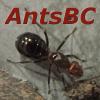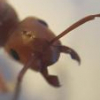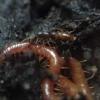I know its been a while since the "name change"/discovery of the fact that the Formica fusca in North America is actually a different species from the Formica fusca in the rest of the world, but I still see a lot of people thinking that F. fusca is still in North America so I've decided to create this thread.
For those of you who didn't know already, Formica fusca is 100% not in North America. Myrmecologists did DNA testing a while back and they clarified that the Formica fusca in North America is actually a different species from the ones elsewhere. I know I just repeated myself, but I wanted to make myself clear.
Now you may be asking, so what is the Formica fusca called in North America that isn't Formica fusca anymore? Formica subaenescens is your answer. Again, they changed the name to Formica subaenescens. I know a few of you are now going to be confused because on some websites (AntWeb for example) it still says that Formica fusca is present in North America. The reason those websites still say Formica fusca is in North America is because they haven't updated their sites yet. I would suggest using antmaps for stuff like that as I would say they are the most reliable at updating stuff.
Anyways I just wanted to get that off my head because i'm a little sick of having to explain to people that Formica fusca isn't in North America on ID threads and such.
So one more time, If you have/had what was called Formica fusca in North America it is now called Formica subaenescens. Thank you for reading this decently long post.























